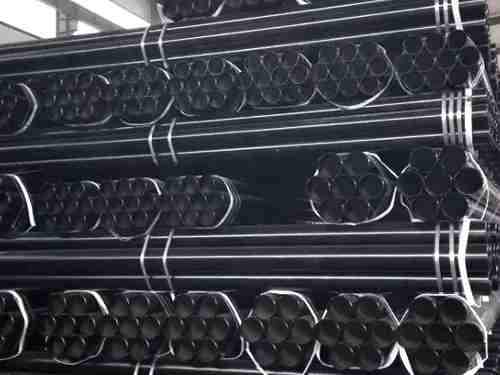H-beams can be produced by welding or rolling. Welded H-beam is to cut strip of suitable thickness to suitable width, and weld the flange and web together on a continuous welding unit. Welded H-beam has the disadvantages of large metal consumption, difficult to ensure uniform product performance, and limited size specifications. Therefore, H-beams are mainly produced by rolling method. In modern steel rolling production, H-beams are rolled using universal rolling mills. The web of the H-beam is rolled between the upper and lower horizontal rolls, and the flanges are rolled and formed simultaneously between the side of the horizontal roll and the vertical roll. Since only the universal rolling mill cannot press down the flange edge, it is necessary to set an edge rolling machine behind the universal stand, commonly known as the edge rolling machine, in order to press down the flange edge and control the flange width. . In the actual rolling operation, the two stands are used as a group, and the rolling stock is reciprocated through several times (Fig. 2a), or the rolling stock is passed through several universal stands and one or two edger stands. The continuous rolling line consists of a certain reduction amount for each pass to roll the billet into a product of the required shape and size. At the flange part of the rolling piece, due to the sliding between the side of the horizontal roll and the rolling piece, the wear of the roll is relatively large. In order to ensure that the rolls can be restored to their original shape after heavy rolling, the sides of the upper and lower horizontal rolls of the roughing mill and the surfaces of the corresponding vertical rolls should be inclined at an angle of 3° to 8°. In order to correct the inclination angle of the finished flange, a finished universal rolling mill, also known as a universal finishing mill, is set up. The side of the horizontal roll is perpendicular to the axis of the horizontal roll or has a small inclination angle, generally not more than 20′, and the vertical roll is cylindrical (Figure 2d). ).
When H-beam is rolled with a universal rolling mill, the section of the rolled piece can be extended more uniformly, and the speed difference between the inner and outer roll surfaces of the flange is small, which can reduce the internal stress and appearance defects of the product. By appropriately changing the reduction amount of the horizontal and vertical rolls of the universal rolling mill, H-beams of different specifications can be obtained. The shape of the roll of the universal rolling mill is simple, the shape is simple, the service life is long, and the consumption of the roll can be greatly reduced. The biggest advantage of H-beam rolling by universal rolling mill is: In the same dimension series, only the thickness dimension of the web and flange is changed, and the dimensions of other parts are fixed. Therefore, the same series of H-beams rolled with the same universal pass has a variety of web and flange thickness specifications, which greatly increases the number of H-beam specifications and brings great convenience for users to choose suitable size specifications.
In the absence of a universal rolling mill, sometimes in order to meet the urgent needs of production and construction, a vertical roll frame can also be added to an ordinary two-high rolling mill to form a universal pass for rolling H-beams. Rolling H-beam in this way has low dimensional accuracy of the product, it is difficult to form a right angle between the flange and the web, the cost is high, and the specifications are small. It is extremely difficult to roll H-beam for columns, so there are not many users.

 English
English Español
Español











